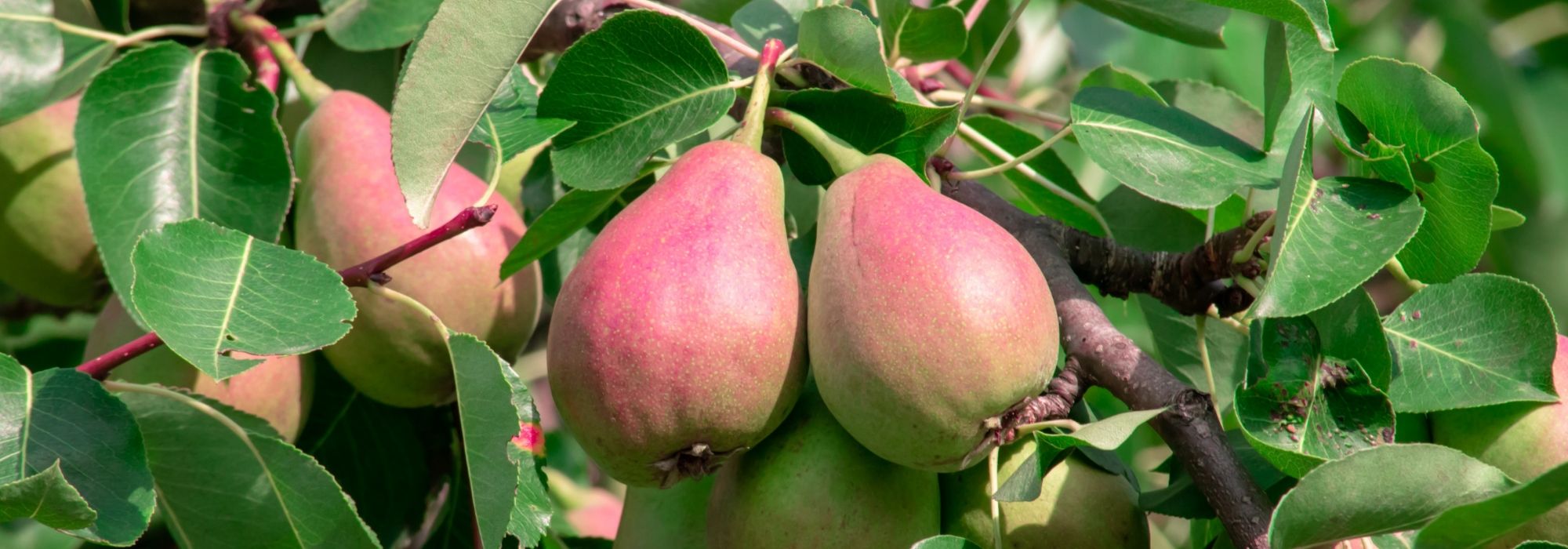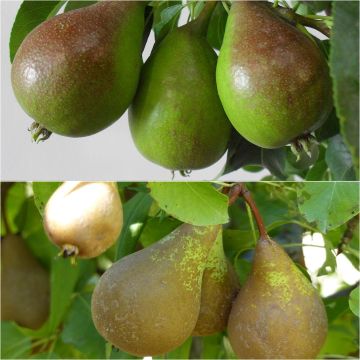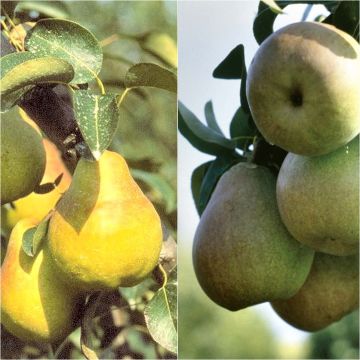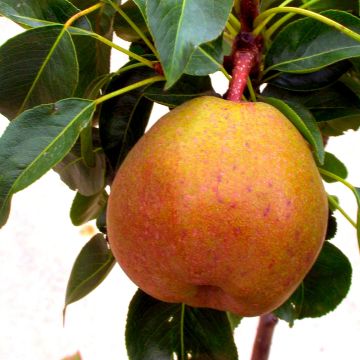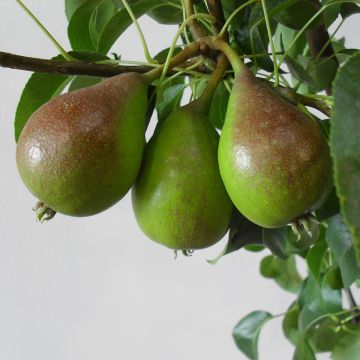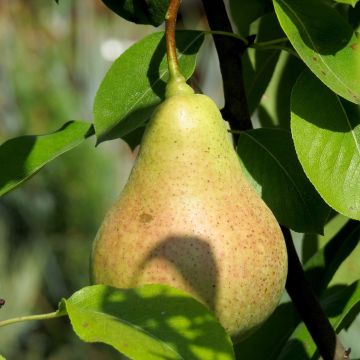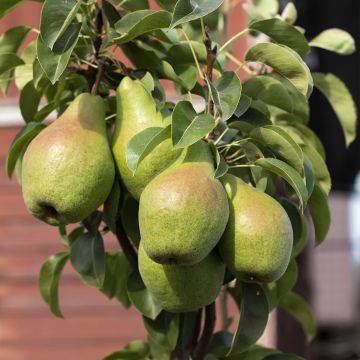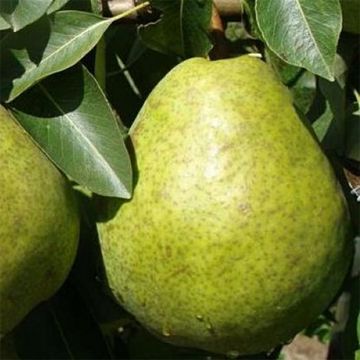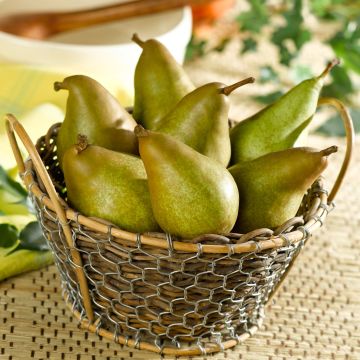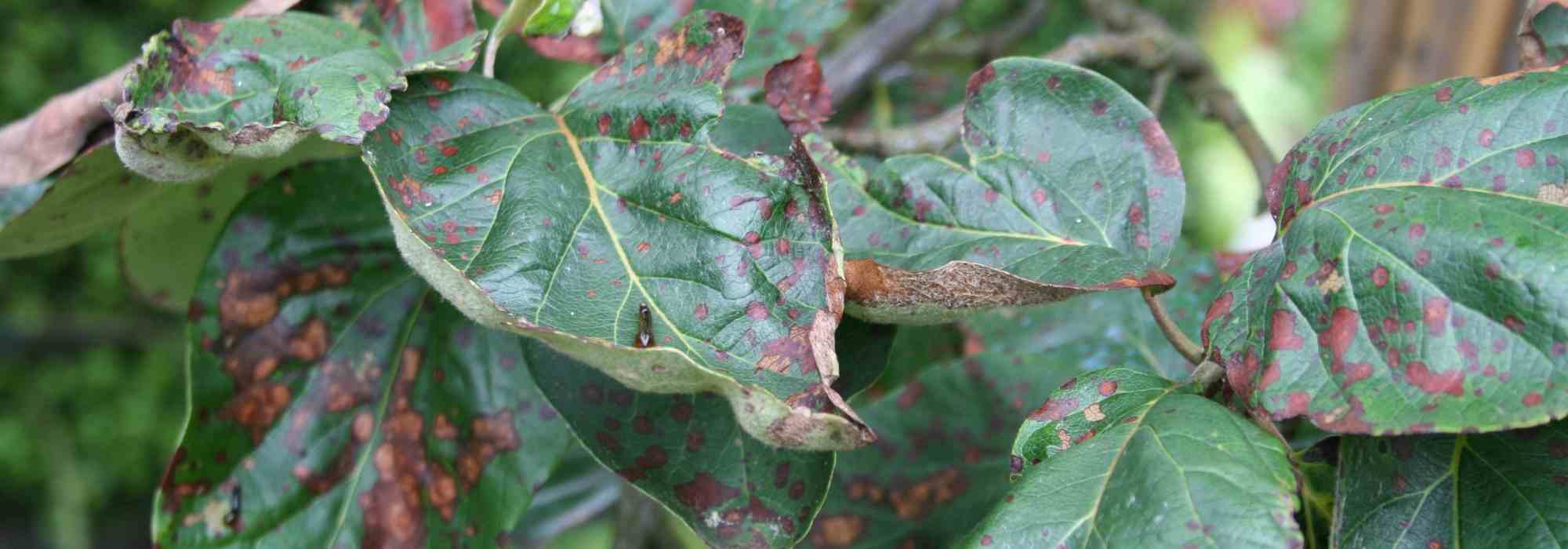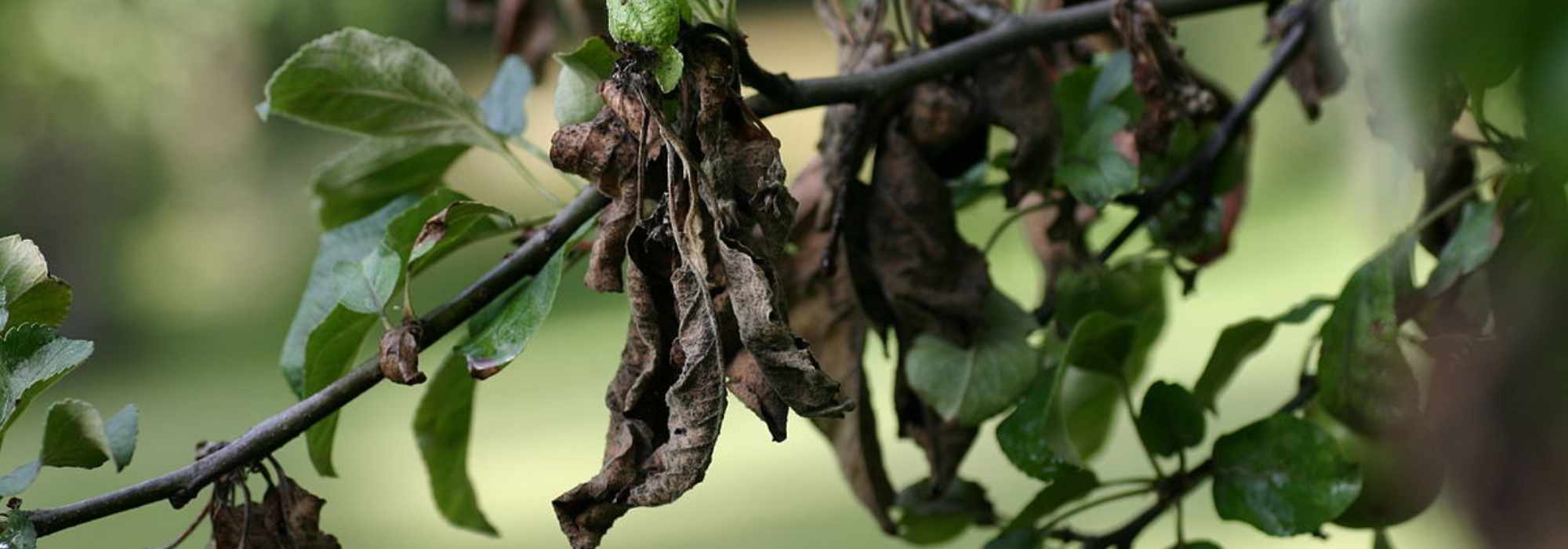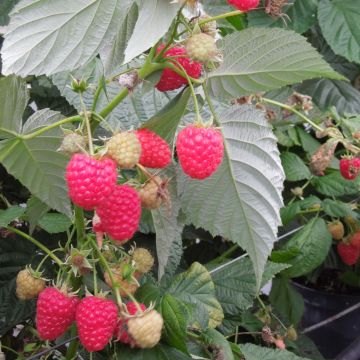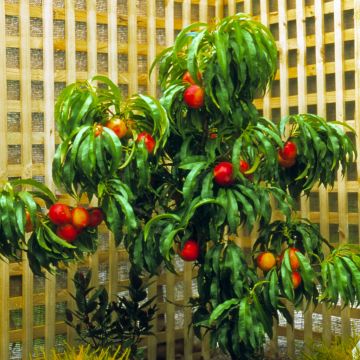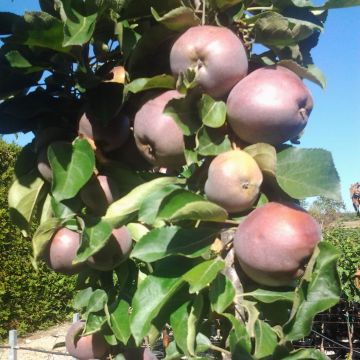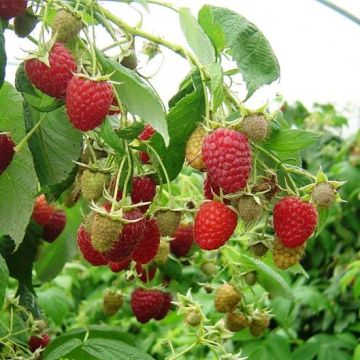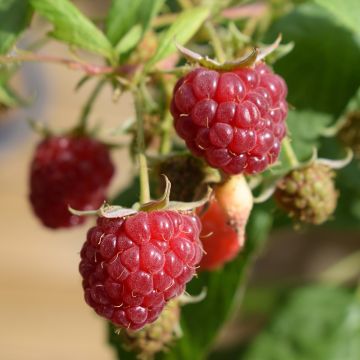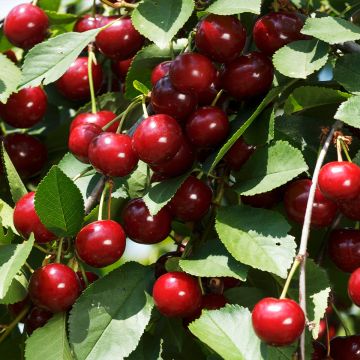

Poirier Nain Belle Helene
Pyrus communis Belle Helene - Pear Tree
Pyrus communis Belle Helene®
Common Pear, European Pear
This pear tree has grown very little in height and has only produced 4 pears in 4 years.
Frédéric , 02/10/2024
Special offer!
Receive a €20 voucher for any order over €90 (excluding delivery costs, credit notes, and plastic-free options)!
1- Add your favorite plants to your cart.
2- Once you have reached €90, confirm your order (you can even choose the delivery date!).
3- As soon as your order is shipped, you will receive an email containing your voucher code, valid for 3 months (90 days).
Your voucher is unique and can only be used once, for any order with a minimum value of €20, excluding delivery costs.
Can be combined with other current offers, non-divisible and non-refundable.
Home or relay delivery (depending on size and destination)
Schedule delivery date,
and select date in basket
This plant carries a 6 months recovery warranty
More information
We guarantee the quality of our plants for a full growing cycle, and will replace at our expense any plant that fails to recover under normal climatic and planting conditions.

Description
The Belle Hélène Dwarf Pear Tree is a small tree that can be grown in a large container as well as in the ground. The fruits are of a size comparable to those of normal-sized pear trees. They are yellow with bronze speckles all over, plump, and contain a fine and melting flesh. The flavour is balanced between sweet and tangy, and very pleasant. Harvest takes place in October, and when well stored, the fruits will keep until January.
The pear tree is a tree native to central Asia, cultivated in China for 6,000 years. It was introduced to Europe around the 6th century. Although its development in the Middle Ages was limited, there were already 200 varieties during the Renaissance. Since then, the number of varieties has continued to increase. These fruit trees have even been developed into dwarf varieties, and Belle Hélène is a very good example.
If not frost-resistant in the ground, the Belle Hélène Dwarf Pear Tree will appreciate sheltered and sunny locations, avoiding windy spots. Easy to grow, it likes moist and deep soils, but dislikes excessively sandy and chalky soils. In a pot, make sure to protect it from frost by moving your fruit trees to a sheltered area and regularly repotting to renew the soil. Watering and fertiliser, including organic options, should be well maintained.
The leaves have an oval lamina, finely toothed at the edge, with a petiole as long as the lamina. They are red on a green background, turning brown in autumn, very decorative! The late white flowering takes place in April, after the destructive frosts. The proximity of a pollinator such as 'Williams', Delbard Gourmande, 'Conférence', or Delbardélice will ensure the fruiting of your balcony fruit tree.
This variety produces beautiful yellow speckled pears with a very round base, and the fine, melting flesh is particularly juicy. The sugar balance provides a slightly tangy flavour, making it a good table pear, but also suitable for pastry and cooking. Pears can be consumed fresh, in syrup, in pastries, in jams and compotes, and can be used to prepare alcoholic beverages, ...
This fruit tree is delivered with a ready-to-plant rootball. During planting, the rootball must be planted as it is. The biodegradable tontine that surrounds the rootball and preserves the rootlets will decompose naturally during the plant's growth. By doing so, you ensure better establishment.
Pyrus communis Belle Helene - Pear Tree in pictures
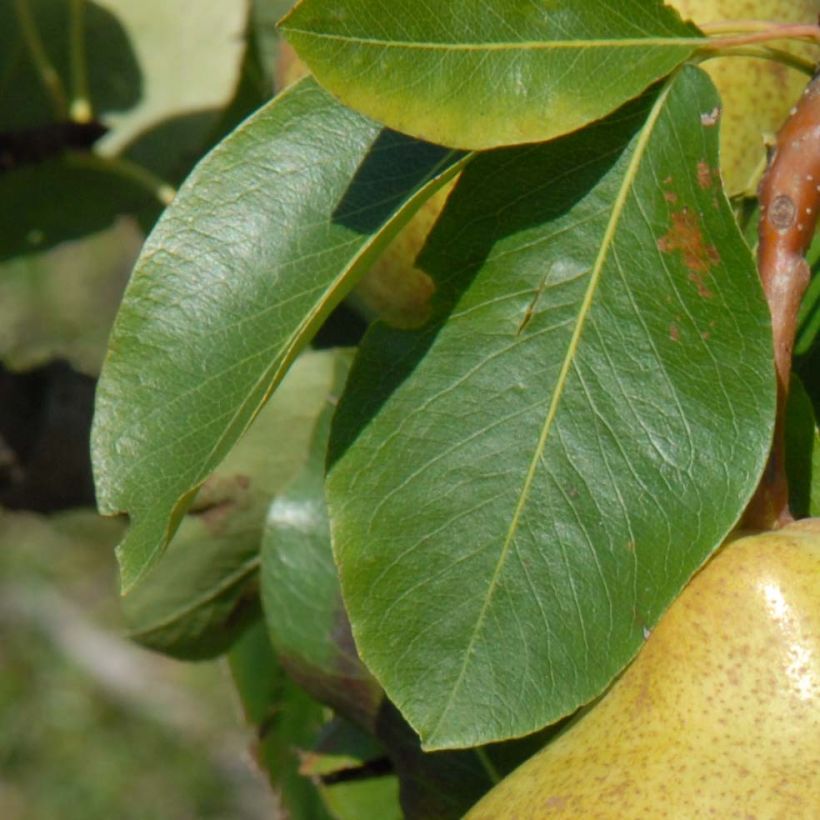

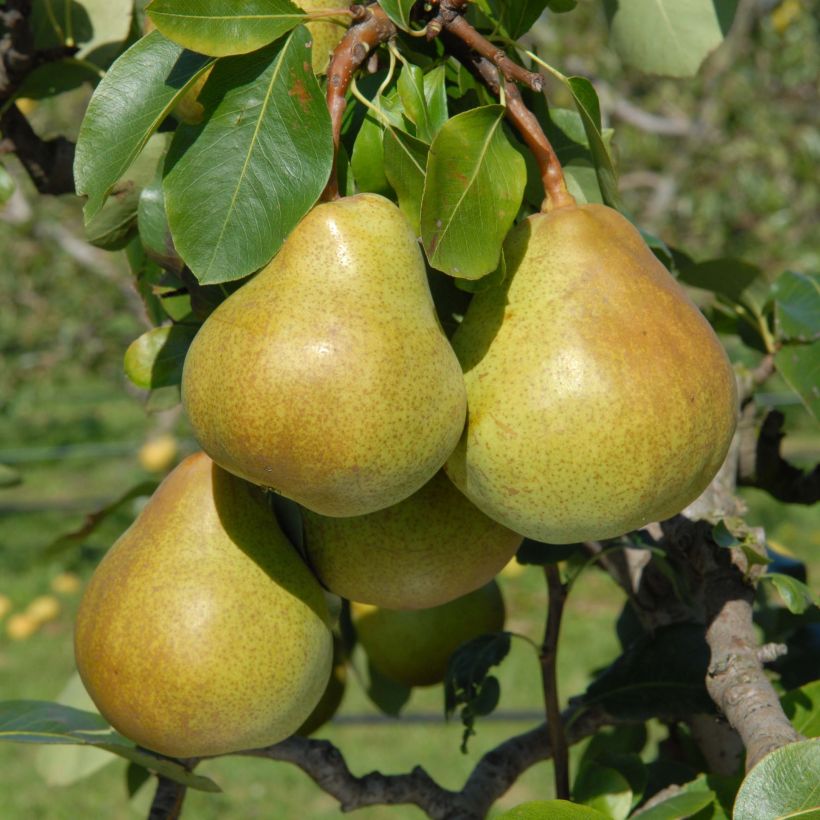

Plant habit
Fruit
Flowering
Foliage
Botanical data
Pyrus
communis
Belle Helene®
Rosaceae
Common Pear, European Pear
Cultivar or hybrid
Other Pear trees
View all →Planting and care
Plant the dwarf Belle Hélène Pear tree in a sunny location, in acidic or neutral soil, moist but not excessively so, or in a pot of at least 25 L.
In open ground, dig the planting hole two to three weeks before planting your fruit tree. Make a hole twice as wide and deep as the pot. On the day, place the tree with its pot in a basin of water, so as to moisten the entire root ball through capillary action. Ensure drainage with a small layer of gravel at the bottom of the hole, add compost, and install the tree in the hole, filling it with a mixture of soil and potting soil. Do not bury the graft union. Firmly tamp down the soil around the base. The root ball should be completely covered. Water generously.
In a pot, choose a sufficiently large container and if it doesn't already have holes, make some at the bottom. Place a layer of clay pebbles or gravel at the bottom. Fill with a mixture of potting soil and garden soil, making sure to leave the graft union above the soil. Tamp down lightly and water thoroughly. Monitor the watering of your potted fruit trees and feed once a year. Repotting should be done in early spring, it is essential but can be done every two years if the container is large enough. Take this opportunity to change the potting soil and clean the roots.
Planting period
Intended location
Care
Planting & care advice
-
, onOrder confirmed
Reply from on Promesse de fleurs
Similar products
Haven't found what you were looking for?
Hardiness is the lowest winter temperature a plant can endure without suffering serious damage or even dying. However, hardiness is affected by location (a sheltered area, such as a patio), protection (winter cover) and soil type (hardiness is improved by well-drained soil).

Photo Sharing Terms & Conditions
In order to encourage gardeners to interact and share their experiences, Promesse de fleurs offers various media enabling content to be uploaded onto its Site - in particular via the ‘Photo sharing’ module.
The User agrees to refrain from:
- Posting any content that is illegal, prejudicial, insulting, racist, inciteful to hatred, revisionist, contrary to public decency, that infringes on privacy or on the privacy rights of third parties, in particular the publicity rights of persons and goods, intellectual property rights, or the right to privacy.
- Submitting content on behalf of a third party;
- Impersonate the identity of a third party and/or publish any personal information about a third party;
In general, the User undertakes to refrain from any unethical behaviour.
All Content (in particular text, comments, files, images, photos, videos, creative works, etc.), which may be subject to property or intellectual property rights, image or other private rights, shall remain the property of the User, subject to the limited rights granted by the terms of the licence granted by Promesse de fleurs as stated below. Users are at liberty to publish or not to publish such Content on the Site, notably via the ‘Photo Sharing’ facility, and accept that this Content shall be made public and freely accessible, notably on the Internet.
Users further acknowledge, undertake to have ,and guarantee that they hold all necessary rights and permissions to publish such material on the Site, in particular with regard to the legislation in force pertaining to any privacy, property, intellectual property, image, or contractual rights, or rights of any other nature. By publishing such Content on the Site, Users acknowledge accepting full liability as publishers of the Content within the meaning of the law, and grant Promesse de fleurs, free of charge, an inclusive, worldwide licence for the said Content for the entire duration of its publication, including all reproduction, representation, up/downloading, displaying, performing, transmission, and storage rights.
Users also grant permission for their name to be linked to the Content and accept that this link may not always be made available.
By engaging in posting material, Users consent to their Content becoming automatically accessible on the Internet, in particular on other sites and/or blogs and/or web pages of the Promesse de fleurs site, including in particular social pages and the Promesse de fleurs catalogue.
Users may secure the removal of entrusted content free of charge by issuing a simple request via our contact form.
The flowering period indicated on our website applies to countries and regions located in USDA zone 8 (France, the United Kingdom, Ireland, the Netherlands, etc.)
It will vary according to where you live:
- In zones 9 to 10 (Italy, Spain, Greece, etc.), flowering will occur about 2 to 4 weeks earlier.
- In zones 6 to 7 (Germany, Poland, Slovenia, and lower mountainous regions), flowering will be delayed by 2 to 3 weeks.
- In zone 5 (Central Europe, Scandinavia), blooming will be delayed by 3 to 5 weeks.
In temperate climates, pruning of spring-flowering shrubs (forsythia, spireas, etc.) should be done just after flowering.
Pruning of summer-flowering shrubs (Indian Lilac, Perovskia, etc.) can be done in winter or spring.
In cold regions as well as with frost-sensitive plants, avoid pruning too early when severe frosts may still occur.
The planting period indicated on our website applies to countries and regions located in USDA zone 8 (France, United Kingdom, Ireland, Netherlands).
It will vary according to where you live:
- In Mediterranean zones (Marseille, Madrid, Milan, etc.), autumn and winter are the best planting periods.
- In continental zones (Strasbourg, Munich, Vienna, etc.), delay planting by 2 to 3 weeks in spring and bring it forward by 2 to 4 weeks in autumn.
- In mountainous regions (the Alps, Pyrenees, Carpathians, etc.), it is best to plant in late spring (May-June) or late summer (August-September).
The harvesting period indicated on our website applies to countries and regions in USDA zone 8 (France, England, Ireland, the Netherlands).
In colder areas (Scandinavia, Poland, Austria...) fruit and vegetable harvests are likely to be delayed by 3-4 weeks.
In warmer areas (Italy, Spain, Greece, etc.), harvesting will probably take place earlier, depending on weather conditions.
The sowing periods indicated on our website apply to countries and regions within USDA Zone 8 (France, UK, Ireland, Netherlands).
In colder areas (Scandinavia, Poland, Austria...), delay any outdoor sowing by 3-4 weeks, or sow under glass.
In warmer climes (Italy, Spain, Greece, etc.), bring outdoor sowing forward by a few weeks.






























